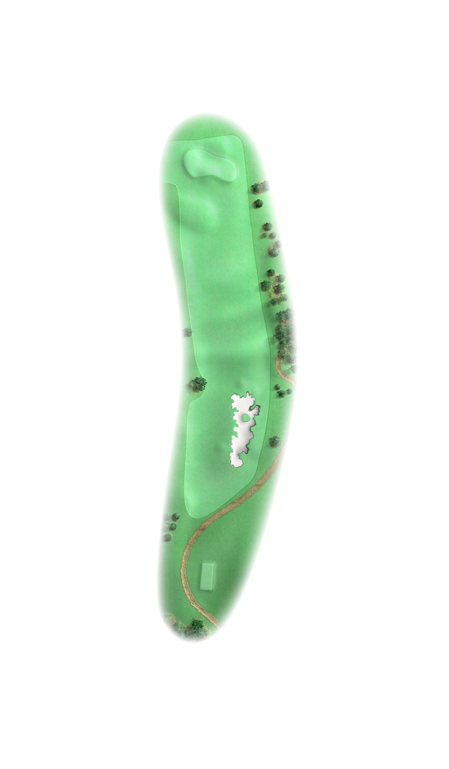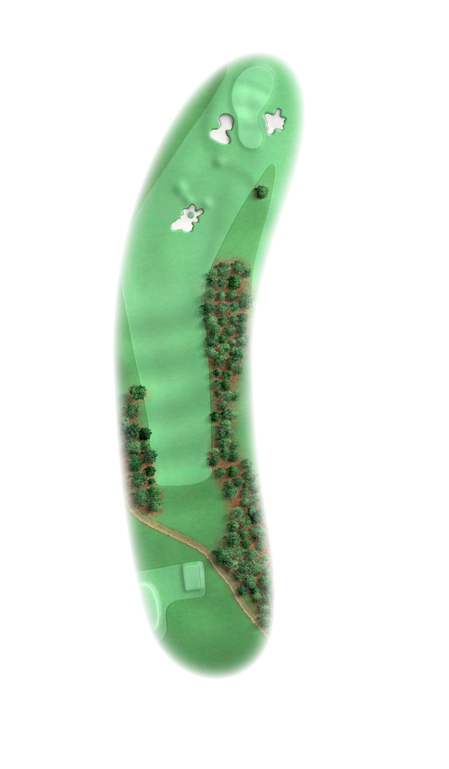During the final stages of the Augusta National Golf Club (ANGC) construction project, Dr Alister MacKenzie wrote a description of the course which was reproduced in the inaugural programme. In it, Alister Mackenzie waxes lyrical about 'Bob' and his contributions that would lead this course to become the world's most wonderful inland golf course.
1934 Augusta National Golf Club Course Tour
Alister MacKenzie makes known there were no templates used in the construction of ANGC. Alister Mackenzie also points out a mental picture of the world's best holes was essential and it was the features of these that were reproduced or improved upon. There are emphatically no copies of holes but rather classical holes which embody their best features. Alister Mackenzie drew on his own body of work as well as holes of distinction from England and Scotland when he designed the course.
Much is said about the current iteration of the most revered golf course on the planet. The roars for or against any changes are hotly debated amongst industry leaders, experts, golf course architecture savants, and the average golfer alike. In this article, we simply present Alister MacKenzie's original 1934 design.
Augusta National Golf Club Original Outward Nine
Augusta National Golf Club
1934 Hole #10 Cherokee Rose
2021 Hole #1 Tea Olive
- The strategy here is simply a long and straight shot. Powerful and accurate is the requisite shot. Skirt the trees on the right to obtain a chance at par.
Augusta National Golf Club
1934 Hole #11 Woodbine
2021 Hole #2 Pink Dogwood
- As with all the holes at Augusta National, the par 5's were to be reached in two by the powerful, skilful and bold with two perfectly struck shots. The hole loses some 80 feet in elevation, playing downhill from tee to green.
Augusta National Golf Club
1934 Hole #12 Flowering Peach
2021 Hole #3 Flowering Peach
- Slightly uphill, the green lies on a plateau. There were two distinct sides to the green. Left was narrow and right, broad. The left pin was protected by a deep bunker fronting the green.
Augusta National Golf Club
1934 Hole #13 Palm
2021 Hole #4 Flowering Crabapple
Hole of Distinction: Eden, Hole 11 at The Old Course, St Andrews
- The inspiration for the fourth was the Eden at The Old Course. The main element identified by MacKenzie was the subtle and severe slopes. One theory on the famous tongue propounded by Brian Schneider is it was not a pin-able but rather allowed firm turf conditions for a running shot.
Augusta National Golf Club
1934 Hole #14 Magnolia
2021 Hole #5 Magnolia
Hole of Distinction: Road, Hole 17 at The Old Course, St Andrews
- The Road Hole in reverse. The Hotel (Railway & Drying Sheds) replaced by a group of trees at the dogleg. The dogleg at Augusta is from right to left as opposed to left to right at St Andrews. It may be surprising the element taken from the green complex was not the bunker nor the road but rather the plateau the green sat on.
Augusta National Golf Club
1934 Hole #15 Juniper
2021 Hole #6 Juniper
Hole of Distinction: Redan, Hole 15 at North Berwick, West Links
- A pure Redan, a template of the famous hole at North Berwick. MacKenzie, however, believes his is much more attractive due to the visibility, lie of the land and beauty of the surroundings. The back right was so pronounced, it soon came to be called the buried elephant.
Augusta National Golf Club
1934 Hole #16 Pampas
2021 Hole #7 Pampas
Hole of Distinction: Tom Morris, Hole 18 at The Old Course, St Andrews
- The design element from the 18th at The Home of Golf is the Valley of Sin. A deep hollow at the front of the green means it is necessary to approach the green from right. Again, a run-up shot was the required shot.
Augusta National Golf Club
1934 Hole #17 Jasmine
2021 Hole #8 Jasmine
Hole of Distinction: Hole 17 at The Honourable Company of Edinburgh Golfers (Muirfield)
- Largely uphill, rising up 76 feet over 500 yards, the green becomes visible for the third shot. The green was originally couched in a punchbowl reminiscent of the 17th at Muirfield.
Augusta National Golf Club
1934 Hole #18 Carolina Cherry
2021 Hole #9 Carolina Cherry
Hole of Distinction: Cape
- A Cape by definition, with a 'bite as much as you can chew' tee shot. Originally, this was the site of MacKenzie's famous horseshoe or boomerang green. The right side of the fairway allows you to access the green without contending with the bunkers on the left side.
Augusta National Golf Club Original Inward Nine
Augusta National Golf Club
1934 Hole #1 Camellia
2021 Hole #10 Camellia
Hole of Distinction: 13 at Cypress Point & 4 at Alwoodley Golf Club
- Described as an easy downhill hole, there is a 102-foot drop in elevation from tee to green! The green was originally a punchbowl. A drive right needed to clear hillocks and the approach shot in was with the length of the green. A tee shot to the left meant an approach over a large spectacular bunker. The inspiration was MacKenzie's own at Alwoodley Golf Club.
Augusta National Golf Club
1934 Hole #2 Dogwood
2021 Hole #11 White Dogwood
- Another downhill, two-shot hole dropping 76 feet in elevation. Here the tee shot placed to the left made the approach easier. MacKenzie remarked he didn't know another quite like it. This is the beginning of the 3 hole stretch known as Amen Corner - an expression coined by Herbert Warren Wind.
Augusta National Golf Club
1934 Hole #3 Golden Bell
2021 Hole #12 Golden Bell
- One of golf's most iconic one-shot holes featuring the iconic 12th green. Attacking the pin on the right is the bold move but gives a birdie chance. Left to the wide part of the green leaves a difficult two-putt for par. Again, a downhill shot by 12 feet.
Augusta National Golf Club
1934 Hole #4 Azalea
2021 Hole #13 Azalea
Hole of Distinction: 17 at Cypress Point & CB Macdonald's Ideal Hole
- Relatively flat, this hole brings out the best features of the 17th at Cypress Point and the ideal hole in CB Macdonald's book. The hole referenced is actually Alister MacKenzie's own. In 1914, MacKenzie won the Lido competition in issue 917 of Country Life, the hole was later built as the 18th hole at Lido. CB Macdonald put up the prize which MacKenzie won.
Augusta National Golf Club
1934 Hole #5 Spanish Dagger
2021 Hole #14 Chinese Fir
Hole of Distinction: 6 at The Old Course, St Andrews
- Elements of the 6th hole at The Old Course clearly in play. Uphill by 90 feet, a drive over the bunker on the right opens up the green. Left and short off the tee leaves a partially blind approach over hillocks and hollows.
Augusta National Golf Club
1934 Hole #6 Fire Thorn
2021 Hole #15 Firethorn
- A half shot hole by design, it was a Par 4 1/2. A well-placed tee shot would open up the opportunity to go for the green in two. The hillock to the right of the green would assist the player to access the left side of the green by aiding a running shot. The pond in front of the green would penalise the player who attempted a hero shot and failed to play it perfectly. The hole drops 23 feet in elevation from tee to green.
Augusta National Golf Club
1934 Hole #7 Red Bud
2021 Hole #16 Redbud
Hole of Distinction: 7 at Stoke Park (Stoke Poges)
- The template is the 7th at Stoke Park. The similarities are uncanny. MacKenzie felt the hole had been improved as the green was more visible and background more appealing. The creek was replaced by a pond in 1947. The hole plays very slightly downhill losing only 10 feet or so in elevation.
Augusta National Golf Club
1934 Hole #8 Nandina
2021 Hole #17 Nandina
Hole of Distinction: 14 at The Old Course, St Andrews
- The element taken from Long at The Old Course is the green itself - but in reverse. Bobby Jones famously played 14 long and pitched back up the green. The ideal line into the green on 17 was not from the left but rather from the right. The hole was designed to cater to a running shot to achieve par.
Augusta National Golf Club
1934 Hole #9 Holly
2021 Hole #18 Holly
- The tee shot is over a valley to a fairway that falls away from left to right. A long drive up the right opens up access to the green which is well protected on the left. The hole rises in elevation by 52 feet.
1934 ANGC Course Tour Summary
The completed course was Alister Mackenzie's crowning achievement. Considered by him to be the best inland golf course ever created, the elements and inspiration continue to mold and shape the game we know today. Legendary characters like Booby Jones, Alister MacKenzie, Jack Nicklaus, Clifford Roberts, and General Eisenhower have made Augusta National and its green jackets what it is today!
Thanks & Credit
The information for this journal article has been collated over time from a multitude of social media channels. The 1934 Augusta Programme has also proved invaluable. Brian Schneider provided verification and guidance throughout. Golf Digest's The Complete Changes to Augusta National, The Masters website and Augusta Chronicle were also instrumental. Special thanks to Chris O'Riley for use of the illustrations which capture the original course. Special thanks to Joe McDonnell for his impressive course map.





















